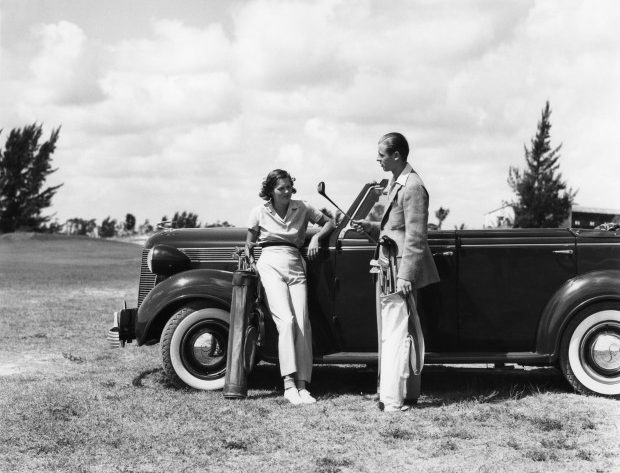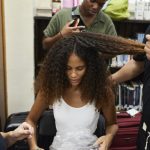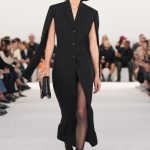Rachelle Wates grew up on the golf course. When she wasn’t traveling to tournaments to watch her dad play, she was running after her grandparents on the fairway that sat next to their house. It wasn’t long before she started playing herself, too, and it was always more than just a game: Golf was family.
And yet, Wates could never find the right clothing for the occasion — resorting to a tired, starched pair of poorly-fitting khakis.
“We don’t want golf clothes you play your 18 holes in and then throw off to transition to something else,” says the Charlotte-based entrepreneur, who originally hails from Palm Beach. “Our grandmothers were getting dressed for the whole entire day wearing something that was chic enough that they felt comfortable having people over for cocktails afterward.”
Photo: H. Armstrong Roberts/ClassicStock/Getty Images
So, in 2020, Wates and Hayden Shoffner launched Byrdie Golf Social Wear, a line of performance golf apparel that pays homage to the stylish sophistication of the sport’s past. And according to Wates, in golf, this sense of heritage isn’t just for the aesthetic. It’s also, in many cases, the rules: Even today, the majority of golf courses, public or private, encourage some semblance of a country club-esque dress code — think polo-style shirts, turtlenecks and crew-neck tops, or skirts no higher than five inches above the knee. At Byrdie, though, Wates views these regulations as being less about red tape and more about creative direction.
“We love that really smart aspect to the way our grandmothers were dressing,” she says, “so that’s where we start.”
Now three years into the brand, Wates remains committed to this idea of revamping golf apparel for a new, more fashion-minded player, and ultimately inviting more players into the sport in the first place. She may have the timing just right: According to the National Golf Foundation, the percentage of women on the golf course rose to 25% in 2021, up from 19% a decade ago.
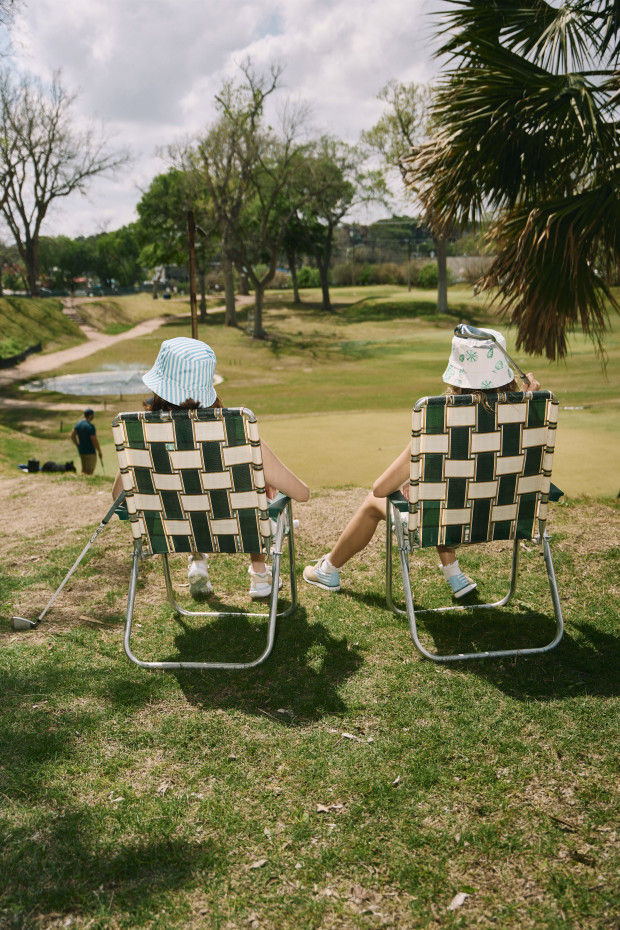
Photo: Courtesy of Byrdie Golf Social Wear
Beyond Byrdie, women’s golf apparel is hotter than ever. Not only are there more fashion labels and athletic-wear companies — from Tory Burch to Lululemon to Maison Kitsuné — releasing collections that cater to women who golf, but the clothes are actually, well, cute. Is the fashionification of golf upon us?
From a purely economic standpoint, it would be good for business. Not only has the number of active golfers been climbing since the onset of the pandemic, but so has the apparel category as a whole. Just earlier this month, a new Allied Market Research report found that globally, the golf clothing market size was valued at $834.1 million in 2020, and is now projected to hit $1.5 billion by 2030. Some experts feel that consumers are now making up for lost time.
“Golf is a recreational sport that’s imbued with a leisurely attitude,” says Nicole Kliest, a freelance writer who has previously covered golf gear for Vogue. “Aesthetically speaking, it’s this sense of ease that makes it so appealing. It’s social, outdoors and at a relaxed pace — and without having to worry too much about attire that’s typically required of high-impact sports, it opens up a world of possibilities to let your personal taste shine through.”
Historically, golf has been a style-driven sport, with players in the early 20th century often gravitating toward a more formal mode of dress that indicated authority and wealth — attributes one must have possessed to gain access to the era’s most exclusive clubs. In the 1920s, men wore single-breasted jackets with starched shirts and neckties, which then evolved to plaid pants and cable-knit sweaters in the 1940s and 1950s.
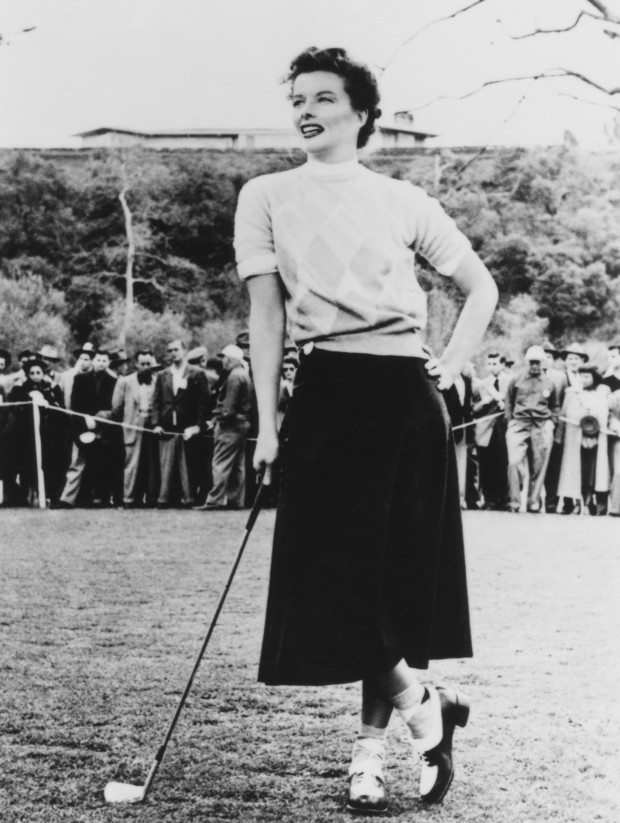
Katharine Hepburn in 'Pat And Mike', 1952. Photo: MGM Studios/Archive Photos/Getty Images
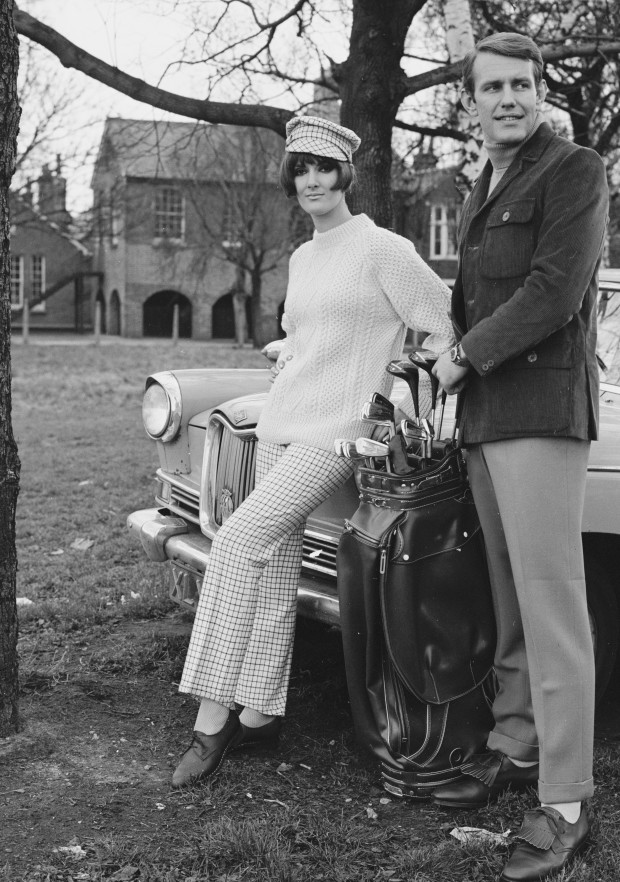
Couple in 1966. Photo: Chaloner Woods/Getty Images
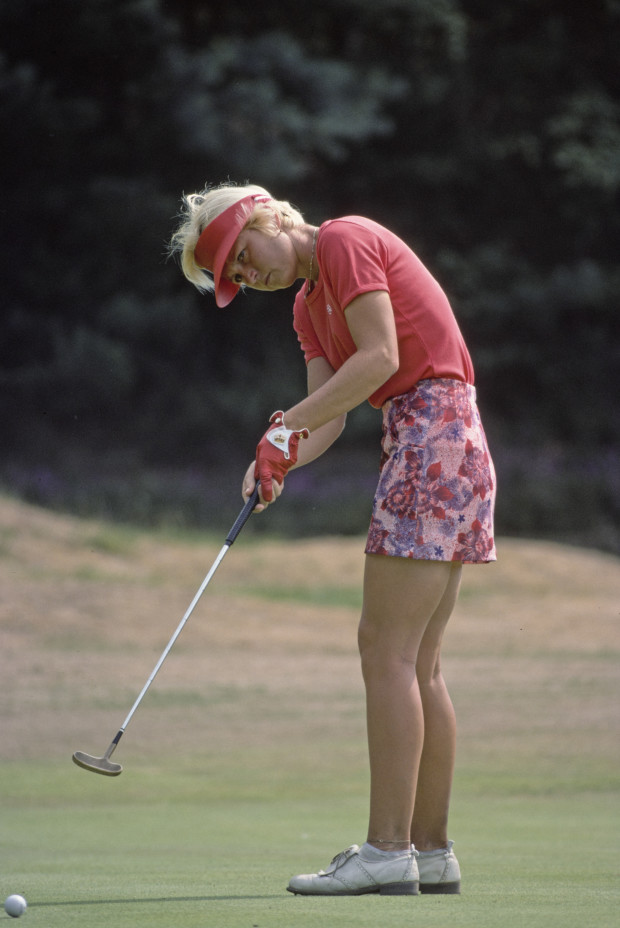
Pam Higgins at the Colgate European Women's Open golf tournament, 1976. Photo: Tony Duffy/Allsport/Getty Images
“Golf is a sport in which you can look stylish while playing, but as the sport has continued to grow, the options for men exploded while the options for women remained stagnant,” says Amy Anderson, who co-founded the elevated activewear brand Honors with Huntley Rodes and Jenna Walter. “The overall feeling has been that women have been left to piece together poorly-designed outfits, and it’s been a pain point for too long.”
For a label like Honors, which launched in July, there’s a focus on versatility — in tandem with a nostalgia-laden aesthetic, of course.
“We noticed a trend that, for women, ‘golf apparel’ is shoved in the back of the closet and makes up perhaps 1% of their wardrobe that she will only wear to play golf in, never for any other activities,” says Anderson. “We wanted to create a collection that isn’t embarrassingly tucked away separately, but is fully integrated with the other 99% of your pieces.”

Photo: Andrew Redington/Allsport
To achieve this, the founding team referenced “minimalist style icons” like Katharine Hepburn, Carolyn Bessette Kennedy and 1990s-era Cindy Crawford, all of whom, Anderson says, were famously photographed playing golf in trousers.
Similarly to Byrdie, the current Honors collection offers that slender, buoyant 1960s-era edge, all with a post-pandemic loungewear kick. Take its $250 Clubhouse Travel Set, a relaxed-fit closet staple the brand says is designed for all of one’s “on-course (and in-club) activities.” It offers more literal golfwear pieces, like its $125 Pleated Skort, which comes complete with a tee holder on the right side of the waist and saw a long waitlist during the brand’s pre-sale. But in its creative direction, Honors is decidedly more aligned with activewear than one might find at a notoriously conservative institution like Augusta National Golf Club, which only began welcoming women members as recently as 2012.
Enter Malbon, a cult-favorite golf-focused menswear label that released its long-awaited womenswear collection this summer. With its already-beloved mens line and a series of much-hyped collaborations, including a particularly viral partnership with New Balance, under its belt, the brand spent two years developing its women’s offering, making 21st-century technical updates to the materials and color palettes while gathering inspiration from the previous decades of sportswear.
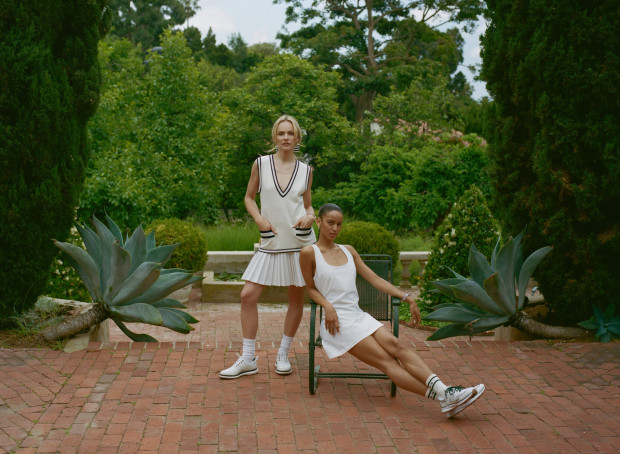
Photo: Courtesy of Malbon
“Whenever I would come across a piece I loved at a vintage store, I would bring it back to the team and look to improve the function, but keep the sensibility,” says Erica Malbon, the co-founder and CEO. The end result is hyper-feminine and quite formal — think gauzy, nearly knee-length skirts pairing well with sleeveless polos and varsity-style knit vests that, the brand says, are made even better when worn with family and friends.
“Golf creates community, while still providing a healthy outlet for competition,” Malbon continues. “It’s great that women are finally able to feel comfortable playing such a predominantly male-dominated sport, and there’s a powerful thing about women playing on an even playing field with men. Golf is one of the only sports where that’s actually possible.”
Golf has long been seen as a boys’ club in areas even beyond the fairway. In 2020, a former anchor and reporter for the NBC-owned Golf Channel filed a complaint with the Equal Employment Opportunity Commission accusing the Golf Channel, where she worked for years, of discrimination; the network disputed her claims.
Kliest explains that the fact that these independent, female-led brands are cropping up at all is an indication that there’s a thirst for it. Yet golf is also becoming a growing priority within leading retail corporations, like Athleta, which just released a Fairway Collection this year.
“By expanding into golf with our apparel and our partners,” says the brand’s Senior Director of Design Casey Schumacher, “we not only cater to the demands of our consumers who are enthusiastic golfers, but also encourage more women to participate in the sport.”
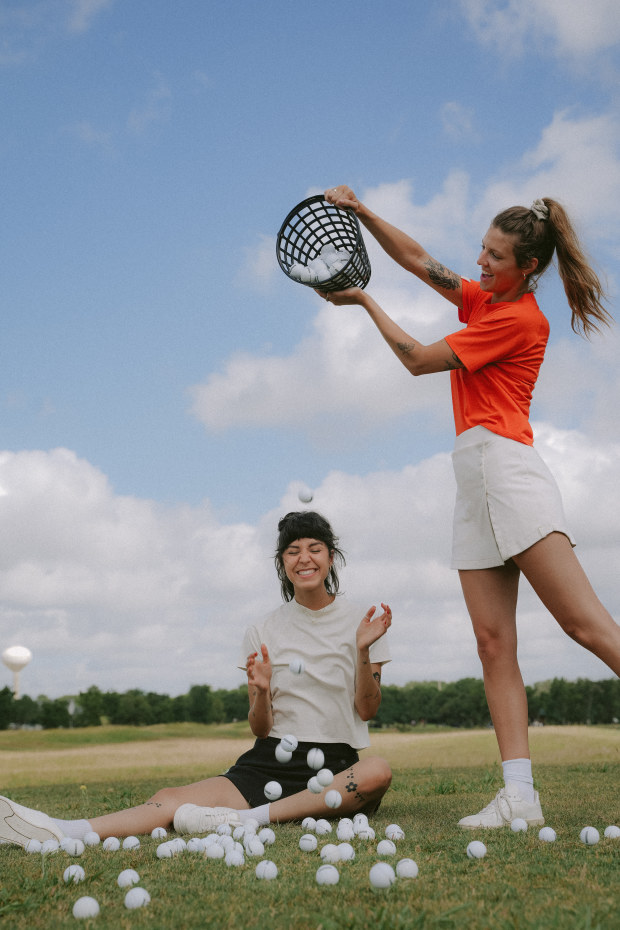
Photo: Courtesy of Sierra Madre
Austin-based women’s golf apparel brand Sierra Madre launched to do just that. By creating trendier and markedly more approachable clothing for women golfers, could they encourage more and more women to join them on the course?
“We don’t want to just be about the boys’ club,” says Michelle Anderson, the company’s co-founder and lead designer. “We want to be about breaking down the barriers for women to feel more comfortable out on the golf course. It’s been so intimidating for so long, but by building our community, we can make it more approachable for women.”
Gone are the days of dysfunctional, overpriced patterned polos, at least if Anderson has anything to do with it. Sierra Madre’s reach goes beyond product, too: An in-house blog offers educational resources for introductory-level golfers — like breaking down golf slang, for example — to hone their skills and develop their confidence.
“Everyday golfers are often among the most cringe-worthy amateur athletes with regard to the way they dress themselves,” says Esquire Contributing Editor Ben Boskovich. “I think what’s been accomplished already will serve golf style for a long time. This era is when we learned that a well-dressed golfer isn’t necessarily wearing a polo.”
Want the latest fashion industry news first? Sign up for our daily newsletter.
